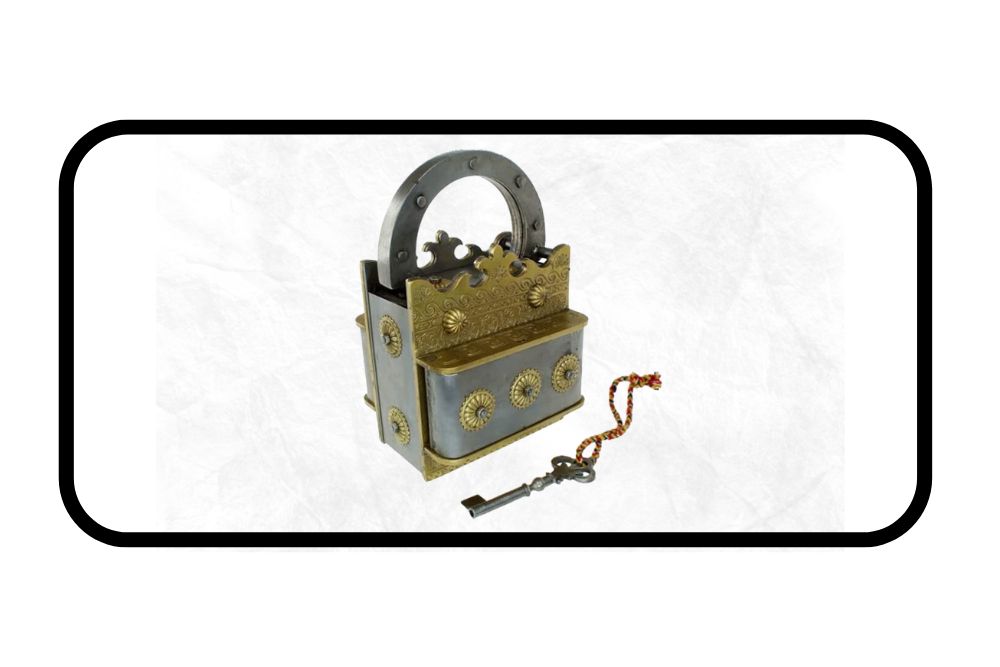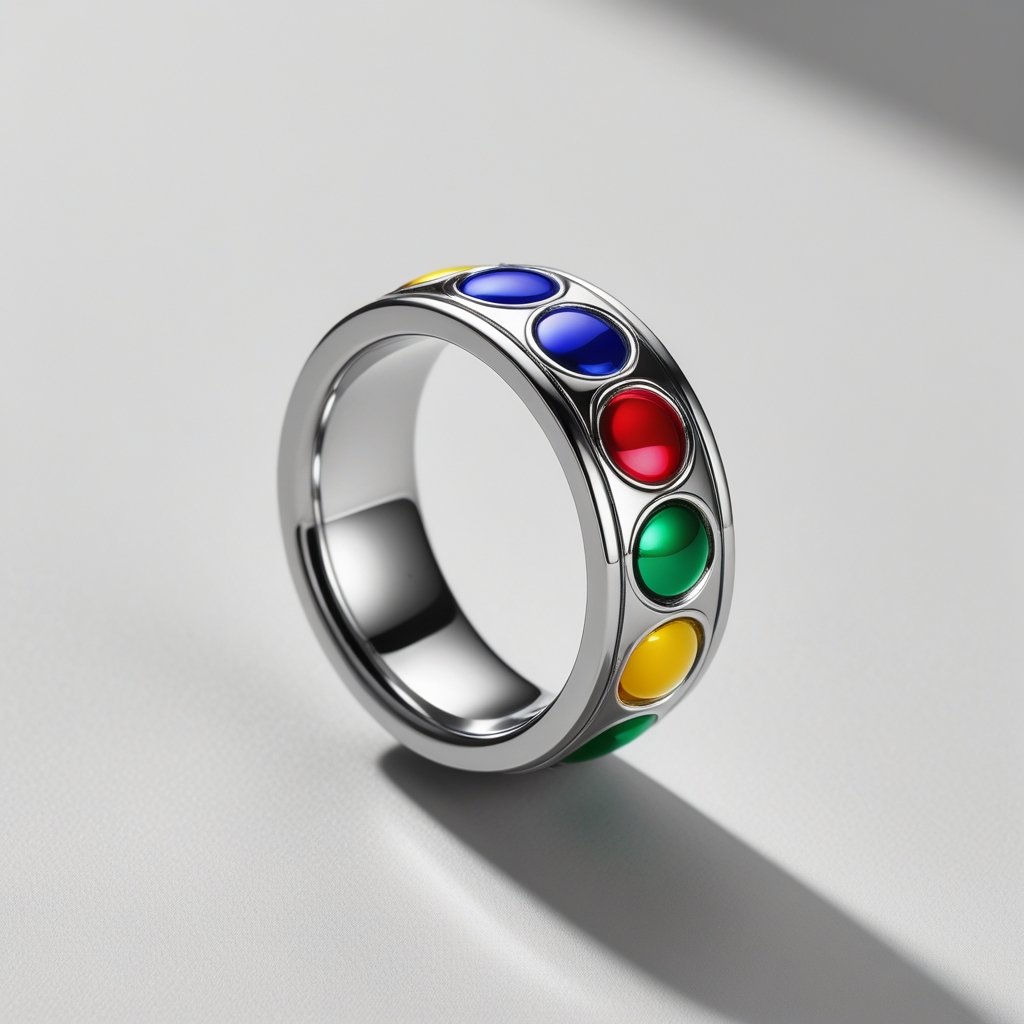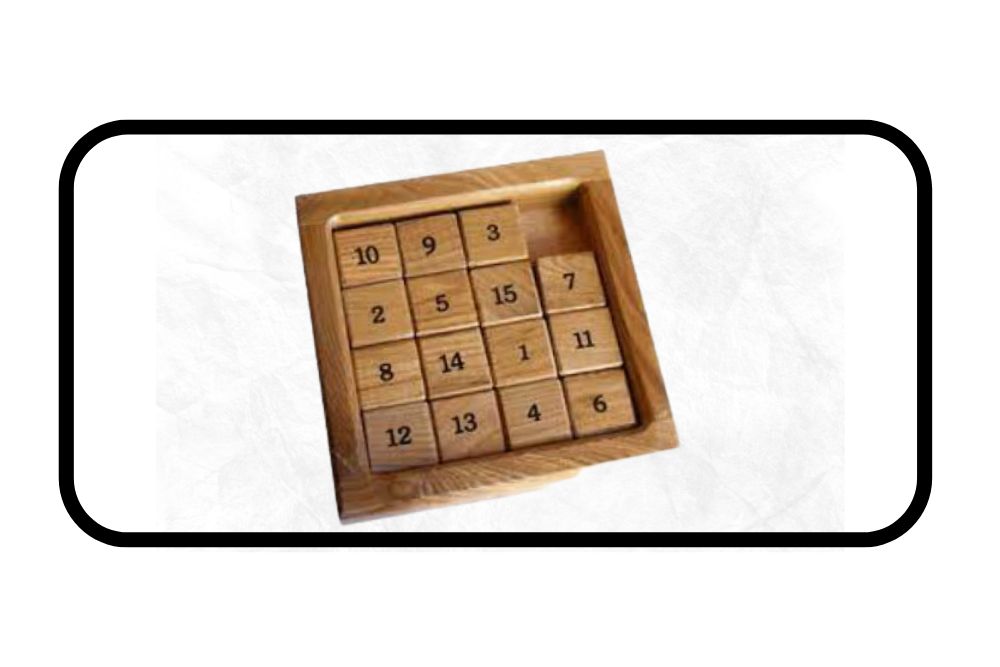A puzzle lock is a unique and intriguing mechanism that combines the functionality of a traditional lock with the intellectual challenge of a puzzle. These locks, often skillfully crafted and beautifully designed, have been used for centuries to secure valuable possessions and to keep intruders at bay. Solving a puzzle lock typically requires a series of precise and deliberate steps that reveal the internal workings of the lock, allowing the user to unlock it without the use of a traditional key.
At their core, puzzle locks operate on the same principles as any other lock, with a series of internal components that must be aligned or manipulated in a specific way to release the lock’s bolt or shackle. However, unlike traditional locks which rely on a key to turn the necessary tumblers or levers, puzzle locks demand the problem-solving skills and patience of their users. It is this combination of security and amusement that has made puzzle locks popular curiosities and avidly sought-after collectibles.
Learning to solve a puzzle lock can be a rewarding experience, requiring patience, spatial reasoning, and dedication. Although each puzzle lock is different, general solving strategies can often be applied across multiple designs, making it possible for enthusiasts to tackle new and unfamiliar locks. Developing an understanding of common mechanisms and practicing a methodical approach to solving will greatly increase one’s proficiency in this fascinating and rewarding pastime.
What Is a Puzzle Lock?
A puzzle lock is a type of mechanical puzzle that requires the solver to manipulate parts of the lock to open it, rather than using a key or a combination. It can be a standalone brain teaser or used as an actual security device. In this section, we will discuss the types of puzzle locks, how they differ from combination locks, their history, and their use as security devices or brain teasers.
Types of Puzzle Locks
There are several types of puzzle locks available, each with its own unique mechanism and level of difficulty. Some common types include:
- Trick locks: These locks may have hidden compartments or buttons that must be discovered and manipulated to unlock them.
- Sequential discovery locks: The solver must discover a series of hidden steps within the lock, which often involve the removal of one or more pieces before the lock can be opened.
- Take-apart locks: The goal is to disassemble the lock into its separate pieces and then reassemble it in the correct order to open it.
Lock Puzzle vs Combination Lock
While both lock puzzles and combination locks require a sequence of actions to open, the primary difference lies in the approach to solving them. Combination locks rely on a predetermined sequence of numbers or symbols, while puzzle locks challenge the solver to discover hidden mechanisms and manipulations that open the lock. Puzzle locks often involve more tactile and hands-on interactions, making them popular as mechanical puzzles and brain teasers.
History of Puzzle Locks
The history of puzzle locks traces back to ancient civilizations like the Romans and the Chinese. These early locks were primarily used to safeguard valuables and secrets. They were often crafted from wood or metal, with intricate designs and mechanisms to confound would-be thieves. Over time, the techniques used to create puzzle locks have evolved, with modern puzzles incorporating advanced materials and engineering.
Security Device or Brain Teaser
Today, puzzle locks can serve multiple purposes. They can function as actual security devices, deterring theft and unauthorized access by requiring unique knowledge of the lock’s mechanism. Alternatively, they can also be enjoyed as brain teasers and challenges for puzzle enthusiasts who appreciate the ingenuity and craftsmanship of these intricate devices.
Whether you seek a unique security device or wish to test your problem-solving skills, puzzle locks offer a fascinating avenue for exploration in the world of locks and mechanical puzzles.
Understanding the Components
A puzzle lock is a fascinating and clever way to secure valuables or simply engage in an intriguing mental challenge. To solve a puzzle lock, it’s important to understand its components and how they function. This section will cover key aspects such as pieces and patterns, notches and tumblers, as well as symbols and clues.
Pieces and Patterns
At the most basic level, a puzzle lock consists of several pieces. These pieces often have unique shapes and designs, which interlock with each other to form a sturdy and secure lock. The arrangement of these pieces, when put together correctly, may reveal a pattern that can be used to unlock the device.
In some cases, the patterns on the lock may serve as visual guides, providing hints or symbols that can help solve the puzzle. Memorizing and understanding these patterns is an important first step in solving the puzzle lock, as they offer valuable clues for the next step: working with notches and tumblers.
Notches and Tumblers
Notches and tumblers are often found within the internal mechanisms of puzzle locks. Notches are small indentations on the lock’s pieces which need to be properly aligned for the tumblers to function correctly. Tumblers, on the other hand, are small cylinders or plates that keep the lock secure by obstructing its movement until the correct combination is input.
Aligning the notches in a puzzle lock is crucial to solving the puzzle. By focusing on the patterns formed by the pieces, one can determine the correct orientation of the notches, ultimately allowing the tumblers to align and enabling the lock to open.
Symbols and Clues
Symbols and clues play a vital role in solving puzzle locks. They act as guides and hints, providing valuable information for the solver to decode the combination or pattern required to unlock the device.
Typical symbols and clues found in puzzle locks include:
- Numbers or letters that indicate a sequence or specific combination
- Marks or visual cues that hint at the correct alignment of pieces
- Hidden messages or riddles which, when deciphered, reveal important information
Taking the time to analyze these symbols and clues can greatly assist in solving the puzzle lock, as they often point to the correct arrangement of pieces, notches, and tumblers needed to unlock it.
Solving Techniques
Puzzle locks require a combination of problem-solving skills and patience to solve. Here are some strategies that can be used to unlock them:
Logical Reasoning
Using logic and reasoning is a powerful approach when solving a puzzle lock. Examine the lock closely to identify any patterns, clues, or visible mechanisms. These observations can help guide your actions and lead you to the correct solution. Remember to take your time as rushing may lead to overlooking important details.

Elimination Approach
The elimination approach involves determining the possible answers and then systematically eliminating the wrong ones. To solve a puzzle lock using this method, start by listing all potential options for each part of the lock mechanism. Once you have identified these options, try them out one by one and eliminate the incorrect combinations. This process will eventually lead to the right solution.
Trial and Error
Sometimes, the best way to solve a puzzle lock is through trial and error. This method can be time-consuming and requires patience, but it can be effective if logical reasoning and elimination are not providing answers. To apply this approach, simply try out different combinations or moves until you find the one that unlocks the lock.
Using Resources
If you are still struggling, consider seeking external resources to help with the solution. This can include reaching out to friends or family, researching online forums or websites, or consulting books or guides on puzzle locks. These resources may provide additional insights or strategies that may help crack the lock.
In conclusion, solving a puzzle lock requires a mix of skills and approaches. By applying logical reasoning, elimination, trial and error, or using external resources, one can successfully solve a puzzle lock and improve their problem-solving abilities.
Puzzle Lock Examples
There are various types of puzzle locks, each with distinct challenges and mechanisms. Some of the most common puzzle lock categories are digital lock puzzles, math riddles, sliding puzzles, and padlock puzzles. This section provides an overview of these categories and offers some tips on solving them.
Digital Lock Puzzles
Digital lock puzzles often require the solver to determine a sequence of numbers or digits to unlock them. These puzzles typically involve clues or patterns that reveal the correct code. In some cases, the code can be reset, allowing for varied solutions or levels of difficulty.
An example of a digital lock puzzle is:
A 4-digit lock has the following hint: each digit of the code is different, and the sum of the digits is 15. How would you solve it?
Solvers should consider testing different digit combinations that meet the given criteria to unlock the lock.
Math Riddles
Math riddles are puzzles that involve using mathematical knowledge to find solutions. These puzzles can range from simple arithmetic problems to more complex algebraic equations, depending on the difficulty level.
An example of a math riddle is:
What two numbers have a product of 20 and a sum of 9?
The solver should think about possible number pairs that meet the given criteria and come up with the solution using mathematical reasoning.
Sliding Puzzles
Sliding puzzles consist of a grid filled with tiles or pieces. The goal is to rearrange the tiles by sliding them around until a desired pattern or order is achieved.
One colloquial sliding puzzle is the:
- 8-Puzzle (3×3 grid with 8 numbered tiles)

To solve sliding puzzles, look for potential moves and patterns, and be patient in working through the necessary steps.
Padlock Puzzles
Padlock puzzles are physical puzzles that require manipulation or interaction with the puzzle’s components to unlock it. These puzzles can involve dexterity, sequential steps, or spatial reasoning to solve.
An example of a padlock puzzle is a:
- Maze-like mechanism where the shackle can only be released after navigating a specific route

Experiment with the padlock puzzle and pay attention to the internal feedback to understand the mechanism and devise a solution.
Overcoming Common Challenges
When attempting to solve puzzle locks, there are several common challenges to overcome. This section will explore a few of these obstacles and provide guidance on how to address them.
Dealing with Limited Information
Often, a puzzle lock might not provide all the information needed to unlock it. In such cases, the solver needs to be observant and make logical deductions. For example, if a wrong number is in the first place, it could mean that it should be in the second or third place instead.
Experimenting and making educated guesses can aid in deciphering the lock. One approach is to try potential solutions sequentially, switching out elements methodically. Keep track of discoveries in a structured way, like in a table:
| Attempt | Combination | Result |
|---|---|---|
| 1 | 1-2-3 | Wrong place |
| 2 | 1-3-2 | Second place |
| 3 | 3-1-2 | In its place |
Final Lock Combination
Finding the final lock combination can be tricky, especially when dealing with more advanced puzzle locks. One tip is to check if turning the digits clockwise or counterclockwise affects the outcome. If it does, try to use this information to make smarter guesses and get closer to the correct answer.
Perseverance and Patience
Solving puzzle locks requires perseverance and patience. It’s normal to feel frustrated or stuck at times, but these feelings can be addressed with a calm, methodical mindset. Taking breaks and giving the mind a chance to reset can also be beneficial.
Remember that puzzle locks are meant to be challenging, and part of their appeal is the satisfaction of overcoming difficulties. Stay focused and determined, and with time and dedication, the lock will eventually yield to a savvy solver.
Additional Resources
If you’re an avid reader and looking to learn more about puzzle locks, there are several resources available. For starters, enthusiasts can join various social media groups where fellow solvers discuss techniques and help each other manipulate these intriguing locks. A plethora of platforms offers access to writers and experts in the field, along with sharing personal experiences and security tips.
Another valuable resource includes online tutorials, which provide detailed guides on solving puzzle locks. These tutorials often use images or videos to demonstrate the proper use of tools, such as shims, for overcoming particular lock mechanisms. Additionally, some lock picking websites provide helpful information and guides suitable for beginners and advanced solvers alike.
In terms of literature, there are numerous books written by skilled locksmiths and security professionals that cover the art of solving puzzle locks. These books provide a wealth of knowledge on the history, designs, and techniques for opening various types of locks. Popular titles worth considering are:
- “The Ultimate Guide to Puzzle Locks: Unlocking the Secrets to Complex Mechanical Puzzles” by Tim Detweiler
- “Puzzle Locks: The History and Guide to Mechanical Puzzles” by Jack Botermans and Jerry Slocum
- “The Art of Lockpicking: A Complete Guide on How to Pick Puzzle Locks” by Oliver Diederichsen
Finally, attending workshops or lockpicking meetups can be an excellent way to learn new techniques and share insights with like-minded individuals. These gatherings are often organized through forums and social media platforms, making it easy to find and participate in events in your area.
Key Takeaways
A puzzle lock is a unique and intriguing type of lock mechanism that requires solving a puzzle or riddle to unlock it. These locks can be found in various forms, such as padlocks, door locks, or even treasure chest locks.
When attempting to solve a puzzle lock, it is essential to examine the lock carefully, looking for any hidden clues and features. This may involve sliders, dials, or other movable pieces that interact with the lock mechanism.
Patience and persistence are key when trying to solve a puzzle lock. It is not uncommon for solutions to involve a series of steps, such as moving parts in a specific order or aligning symbols correctly. Be prepared for trial and error, and remember that these locks are designed to be difficult to open.
Learning from the experiences of others can be helpful in tackling a puzzle lock. Consider searching online for tutorials, videos, or discussion forums related to the specific type of lock you are trying to solve. This may provide valuable insight and tips to guide you in the right direction.
Lastly, always handle puzzle locks with care, as some of them may be delicate or contain intricate mechanisms that can be easily damaged. Remember to enjoy the challenge and satisfaction that comes with solving a puzzle lock, as it is a unique and rewarding experience.




